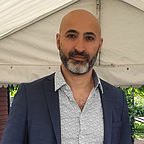Quantum information theory
THE BASICS
Introduction
I haven’t had much time to write lately but I feel that there is growing interest in quantum information theory as of lately. That’s why I decided to write a short article to demystify some of the basic concepts within this field.
On an abstract level, quantum information isn’t that difficult to grasp. The real challenge arises when we try to understand it using everyday logic. My advice: don’t! To delve deeper into quantum information theory, we must embrace the fact that the mechanisms underlying quantum information operations belong to a reality different from our own. But fear not, on an abstract level, the basic concepts are still accessible. So, let’s take a dive into some of them.
Quantum Bits (Qbits)
In classical computers, information is stored as bits, which can be in one of two states: 0 or 1. These states are definitely distinct, and a system can be in either state but not both simultaneously. It’s like being present at a specific location at a certain time, or not. There’s no in-between, unless you’re in a science fiction movie — but that’s a whole different story!
A quantum system, on the other hand, doesn’t give a rat's ass about our conception of what is and is not possible. A quantum bit (qubit) can be in states 0, 1, or even in a superposition of both. Now, before you retreat to familiar ground, in an attempt to retain your sanity, let me assure you it’s not about being half 0 and half 1. A superposition is a state where both two states 0 and 1 are present at the same time.
Remember that science fiction scenario I mentioned earlier, where you are both present and not present at a certain location at a given moment in time? That is what I am talking about. The poor cat is both dead and alive.
But there is some sanity to all this madness. Praise be the Quantum Gods, you are not able to directly observe that magical superposition state, but rather have to infer it. More on that later. But first, let’s add a touch of math — don’t worry, it’s simple!
Classically in a binary system, we have two states 0 and 1. In quantum information theory on the other hand those states are presented as
| 0 ⟩ and | 1 ⟩. There are some good reasons for this presentation, besides the fact that they look cooler. But basically, both notations so far are equivalent. Now, a superposition state would then look something like this:
Let’s not bother with the choice of numbers preceding each state for now and focus on trying to intuitively understand what this implies. Again, the state above is not half 0 and half 1 but some weird state where both exist simultaneously. You might ask, what if we use some modern, advanced quantum device to observe this state? Well, when we do a measurement to determine the qubit’s state, we observe either | 0 ⟩ or | 1 ⟩ — just as The Gods of the old (the classical) intended it to be. Quantum physicists often eloquently say that the quantum system collapses into a definite state. However, which state it collapses into depends on probabilities associated with the coefficients in the superposition. The choice to adopt a probabilistic approach to the interpretation of quantum mechanics is some physicists' way to retain their sanity. Anyway, in this particular case, due to those fractions preceding each state, there is a 50–50 chance to observe either state upon measurement.
To recap, a quantum state in superposition cannot be directly observed but can be inferred through experiments (more on that later). Upon measurement, the quantum state will collapse to either |0⟩ or |1⟩, behaving like the classical bits we’re familiar with.
In the next article, I’ll explain one of the experiments that sheds light on why quantum information theory is the correct description of such states. And who knows, maybe in the article after that I could tell you about the spooky action at a distance of quantum entanglement.
